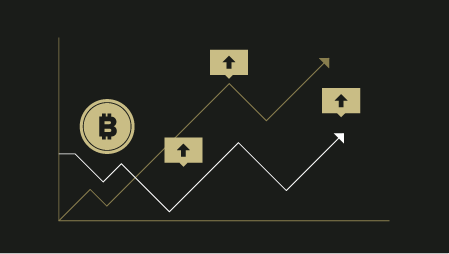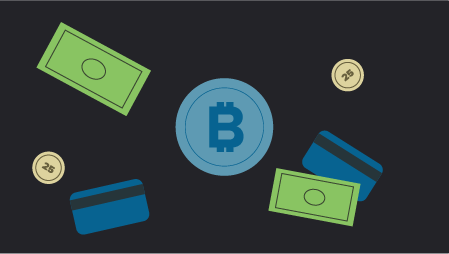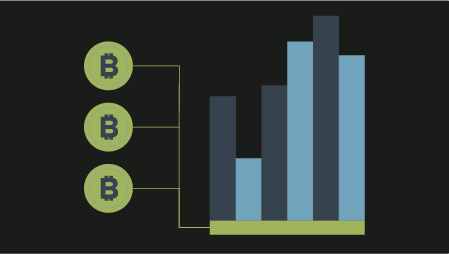Ready to learn Blockchain? Browse courses like Blockchain for Finance Professionals developed by industry thought leaders and Experfy in Harvard Innovation Lab.
Part One, Part Two, Part Three, and Part Four of this series covered traceability approaches, data, and capabilities for improving freshness and safety, capabilities that blockchain brings, and which automation belongs in a smart contract vs. being executed off-chain. Here we talk about the importance of affordability, an approach to ensuring that valid data about the produce supply chain is being written to the blockchain, and an example of a hybrid system that combines blockchain and Networked SaaS technologies.
Hybrid Systems Will Prevail
Blockchain technology alone cannot provide freshness, safety, provenance, and recall capabilities.
That requires data and capabilities from outside the blockchain. It seems that the best emerging approach will be a hybrid consisting of 1) a centralized networked SaaS platform providing economical scalability and deep algorithmic and process capabilities, combined with 2) blockchain and smart contracts for transparency and validation. Blockchains are attractive because of their ability to create a shared, trusted single-version-of-the-truth between trading partners. However, a networked SaaS platform can provide a shared, trusted single-version-of-the-truth at a much lower cost.
Affordability is Key to Adoption
Affordability is essential for wide adoption and without wide adoption, end-to-end traceability cannot be achieved. A blockchain-based system can provide traceability, but only with full participation across the chain. Hence, the financial model (i.e. who pays) is important as it encourages or inhibits broad participation. In past attempts at traceability (such as PTI), the grower pays and yet gets very little actual benefit. A system that distributes costs and benefits more equitably across the chain is more likely to succeed.
Ensuring Validity of Data Being Written on the Blockchain
Furthermore, a networked SaaS platform provides a much higher level of confidence in the data written onto a blockchain. Take the case of a smart contract being executed when a pallet of produce is received at the retailer. If this is done with blockchain alone, then the contract might require a sign-off on the shipment by the retailer’s QA person. If we also have a networked SaaS platform with end-to-end temperature tracking and produce temperature profiling capabilities, then the contract can include days-of-remaining freshness in the acceptance criteria. The SaaS platform will have confirmed that the temperature data read from the RFID tag has not been tampered with and is valid because all along in the journey of that pallet (and its tag) the platform has been doing process checks and irregularity detection, greatly reducing the chances there was any cheating or gaming of the system. As a result, the acceptance or rejection decision is made with much more confidence and intelligence about the actual condition of the produce.
Example of An Existing System Providing Hybrid Functionality
When looking at a hybrid networked-SaaS/blockchain solution, it is clear that the vast majority of the development effort and differentiated intellectual expertise is actually in the networked-SaaS platform. One solution provider, Zest Labs, offers virtually everything required for a hybrid solution, combining the best of networked SaaS and blockchain technologies. Working closely with some of the nation’s largest grocers and growers, Zest has accumulated and created a depth of intellectual property over the past decade+ that includes:
- End-to-end temperature tracking, including the sensor and reader hardware, cloud-network, and, most critically, integration into all the various process steps from harvest in the field, to pre-cooling and other steps in the packhouse, transport, distribution, and receipt by the retailer;
- A rich set of temperature response profiles developed via extensive testing in their labs for different produce varieties, locations, and time-of-season combinations;
- Corresponding freshness models for all those permutations to calculate Condition-based Expiration Datesthat accurately predict remaining shelf life;
- The complex processing mapping and distribution logic needed to do intelligent routing of pallets (sending each pallet to the destination best matched to its remaining shelf life);
- A system of control for growers to ensure that freshness and safety processes are being properly executed, resulting in longer shelf life pallets and fewer recalls;
- Very simple, unambiguous user interfaces refined over years to be useable by laborers and supervisors across the produce supply chain, in locations such as fast paced and chaotic packhouses;
- Deep analytic capabilities that let supervisors and managers make rapid optimal decisions when there are tradeoffs to be made or corrective action is needed;
- Irregularity detection analytics that understand and detect when processes are not being properly followed and/or there may be gaming of the sensor data;
- A deep understanding of industry dynamics and the needs of growers, retailers, and distributors—their ways of doing business, issues and concerns, typical processes and conventions, interests of each party, and so forth;
- Experience making all of this work out in the field (literally), overcoming all the various speed bumps and hurdles encountered in the real world.
No other solution provider we are aware of has pulled together a set of capabilities like this. The addition of blockchain technologies to Zest’s solution is one more important capability to add to this list.
In the end, we predict that hybrid systems combining a centralized networked SaaS platform with blockchain capabilities will prevail. These will bring true transparency and trust. They are based on credible and accurate remaining freshness calculations, transparent monitoring of proper completion of all safety process steps, early detection of tainted produce requiring recall, the ability to prevent bad produce (either tainted or with inadequate shelf life) from proceeding further in the supply chain, and automated acceptance processes. When the costs and benefits for such a system are equitably distributed, we expect to see wider adoption and major benefits for everyone up and down the produce supply chain, all the way to the end consumer.




